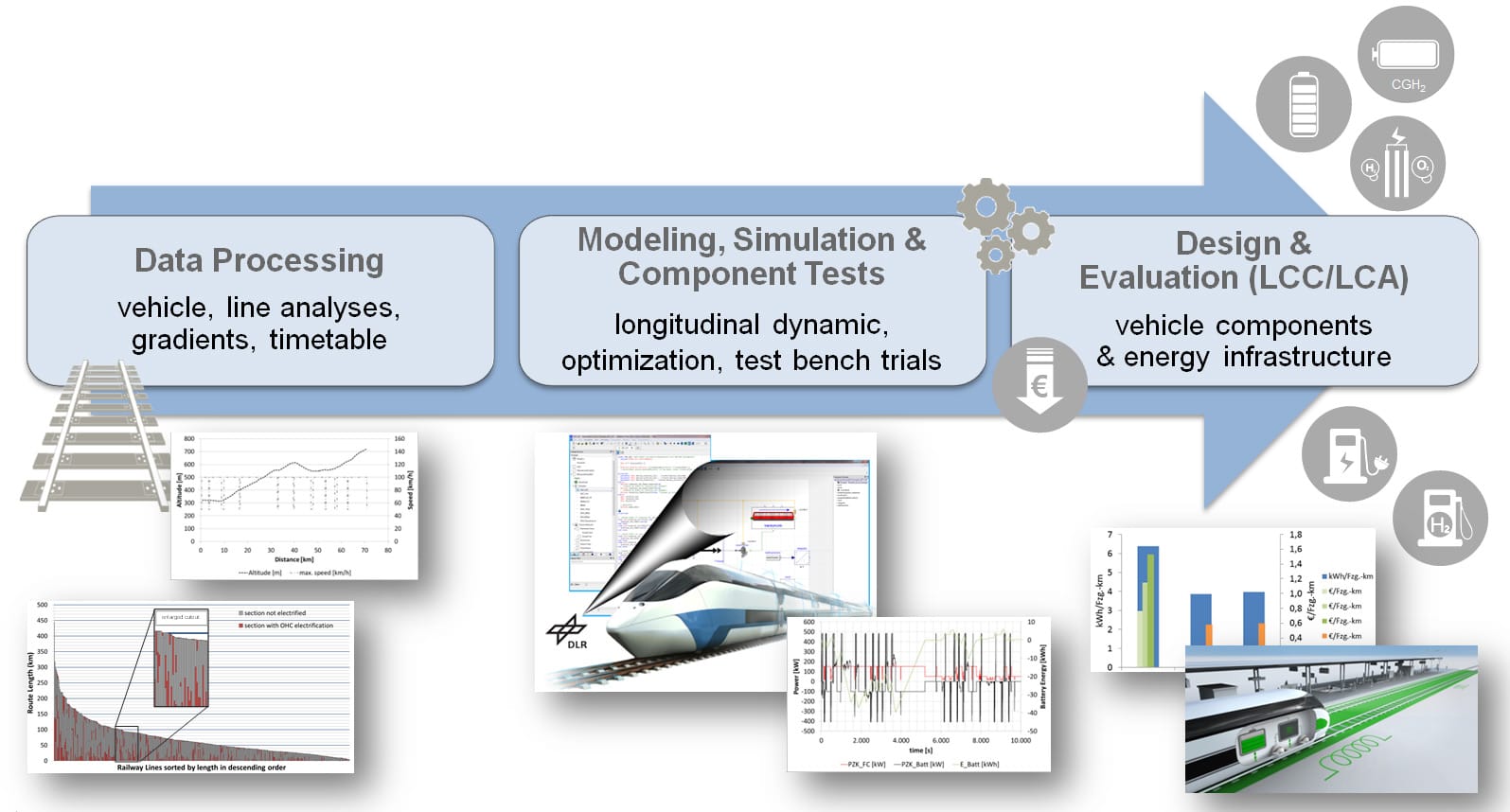About half of the EU's rail network is not electrified – and a large share will remain not electrified in the future since complete line electrification is not economically feasible in many cases. The application of fuel cells and batteries in rail vehicles as a replacement for today's diesel operation and instead of complete line electrification can be a useful complement to achieve the climate and clean air protection targets. But which drive and power supply option is best suited for a particular use case in technical, ecological and economical terms?

At DLR, innovative propulsion, recharging and refueling options based on batteries and fuel cells are simulated, designed and evaluated for partially and non-electrified lines. A screen presentation shows the methods and tools developed at DLR which are used for evaluating the alternative powertrains. Component and vehicle data are collected and characterized as well as line and network analyses are carried out. In the field of model development and validation, simulation of energy flows and development of energy management systems is performed with the use of optimization-based software models. Components are tested and validated on dedicated hardware test benches, for batteries and fuel cell systems. Powertrain and energy supply infrastructures are designed and evaluated with regard to life cycle costs and ecological parameters. The work is done in close collaboration with specialized DLR-institutes within the project Next Generation Train and in cooperation with the railway industry as well as rail transport companies and authorities.
